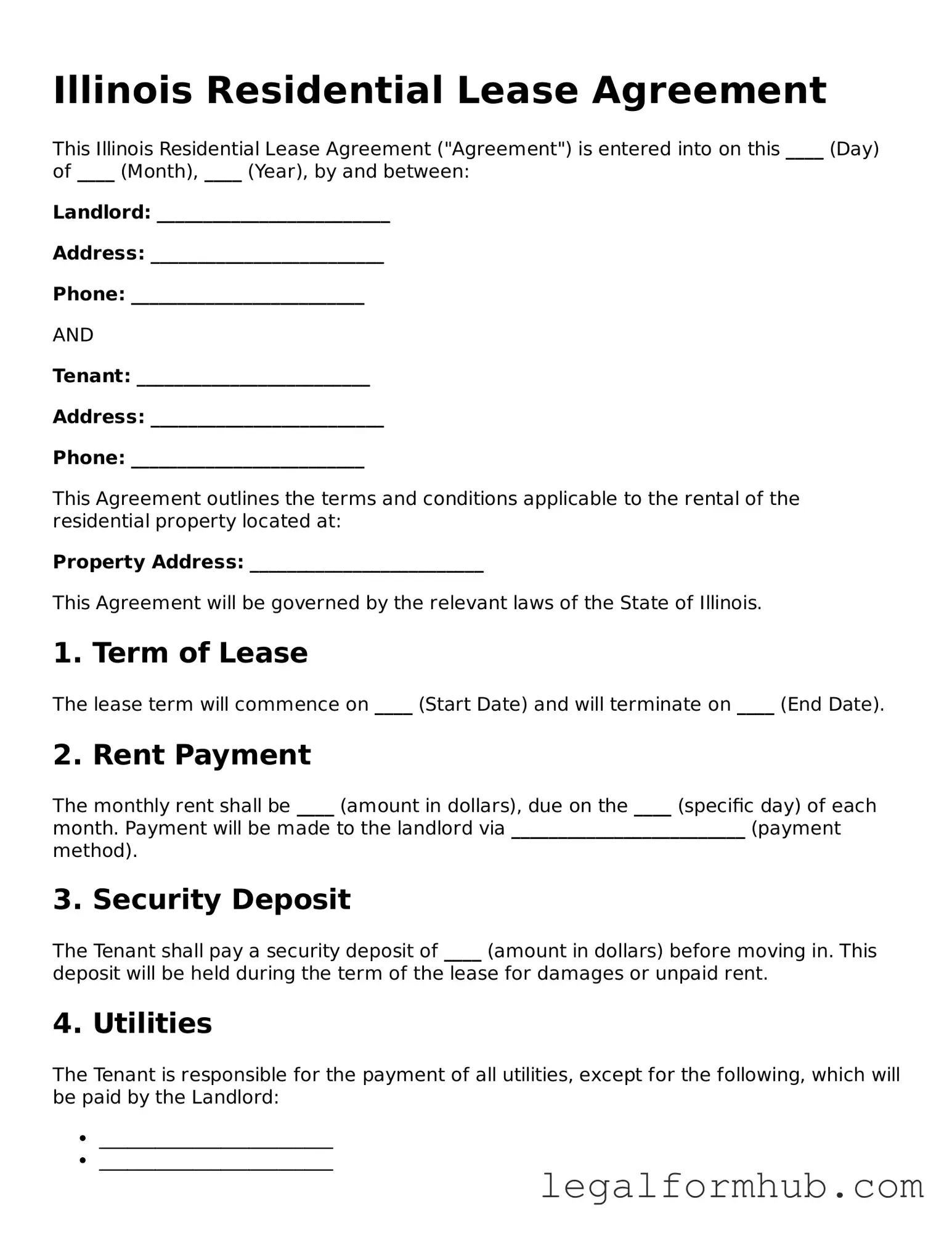The Illinois Residential Lease Agreement is similar to a Commercial Lease Agreement. While both documents outline the terms under which a property is rented, a Commercial Lease Agreement specifically pertains to business properties. This type of lease includes details about the use of the space for commercial purposes, payment terms, and responsibilities for maintenance. Both agreements aim to protect the rights of the landlord and tenant, but the Commercial Lease often involves more complex terms due to the nature of business operations.
Another document comparable to the Illinois Residential Lease Agreement is the Rental Application. This form is typically completed by prospective tenants before signing a lease. It collects essential information about the applicant, including employment history, rental history, and personal references. While the lease agreement outlines the terms of occupancy, the rental application serves as a screening tool for landlords to assess potential tenants’ suitability.
A Tenancy Agreement shares similarities with the Illinois Residential Lease Agreement, as both documents establish the terms of occupancy. However, a Tenancy Agreement can be more informal and may not always be written. It can exist as a verbal agreement, making it less structured than a formal lease. Both documents, nevertheless, serve to clarify the expectations of both parties regarding rent, maintenance, and other responsibilities.
The Sublease Agreement is another document that bears resemblance to the Illinois Residential Lease Agreement. This agreement allows a tenant to rent out their leased property to another individual, known as the subtenant. It outlines the rights and responsibilities of both the original tenant and the subtenant. Like the primary lease, it includes details about rent payments and property maintenance, ensuring that the original tenant remains accountable to the landlord.
Understanding the various documents involved in the leasing process is essential for both landlords and tenants. One such document is the Employment Verification Form, which helps to confirm an individual's employment history, job title, and salary from previous employers. This form serves as a vital tool for prospective landlords, providing them with credible information to assess the financial stability of their applicants. To ensure a smooth pre-approval process, consider utilizing this resource: Fill PDF Forms.
Finally, the Lease Renewal Agreement is akin to the Illinois Residential Lease Agreement as it extends the terms of an existing lease. When a tenant wishes to continue occupying a property beyond the original lease term, this document formalizes the extension. It typically includes updated terms, such as changes in rent or duration, while reaffirming the rights and responsibilities established in the original lease agreement.
